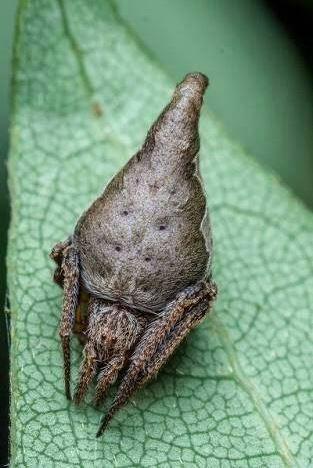
Even though many species are becoming extinct slowly, several new of them are discovered as well. Here’s a list of some of the gems discovered in 2016 that prove that our planet contains unexplored places with never-before-recorded plants and animals.
10. Kankuamo marquezi
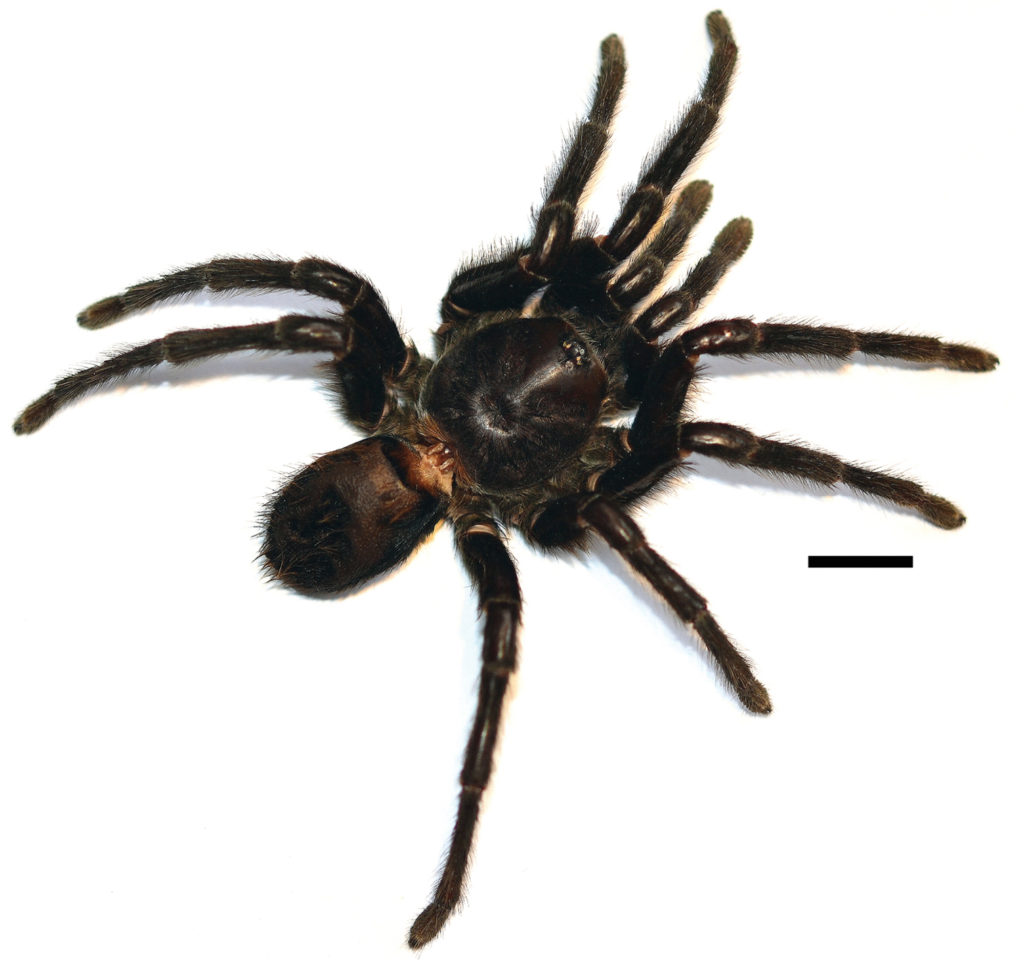
Kankuamo marquezi, discovered in Sierra Nevada, Santa Marta, Colombia, proved itself as not only a new species, but also a new genus. Unlike the rest of the tarantulas, this spider use its stinging hairs in direct attack instead of shooting it at the offender. The hairs were noted to form a small oval patch of lance-shaped barbs, hypothesized by the scientists to have evolved to defend their owners by direct contact.
Described in the journal ZooKeys by an international research team, led by Carlos Perafán, University of the Republic, Uruguay, the name of the new spider genus honours an indigenous people from the Caribbean coast region, whose language and culture are at a serious risk of extinction. Meanwhile, its species’ name pays tribute to renowned Colombian author and Nobel laureate for his novel ‘One Hundred Years of Solitude’ Gabriel García Márquez.
“This new finding is a great contribution to the knowledge of the arachnids in Colombia and a sign of how much remains to be discovered,” point out the authors.
9. Swiftia farallonesica
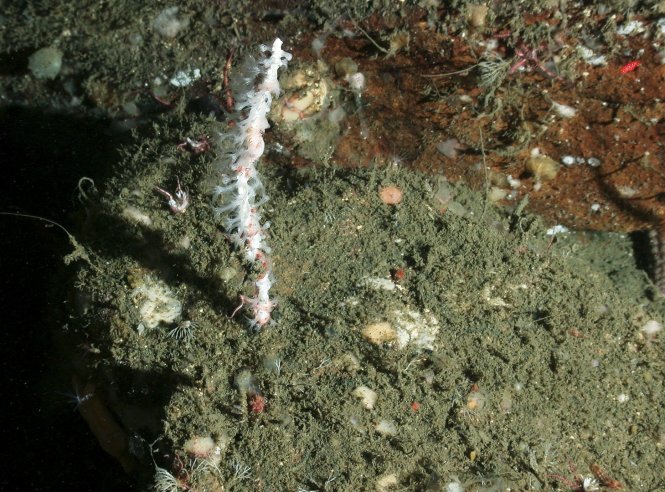
The whip-like stalk—only 15 inches in length—of this snow-white coral was spotted by Gary Williams, octocoral expert and Academy curator of invertebrate zoology, as they gently swayed in the ocean currents. Unlike the hard corals that compose the famous tropical reefs closer to the ocean’s surface, this soft-bodied coral species stands alone at depth and feeds on microscopic plankton floating through the water column.
Even before its formal description, the new species—now named Swiftia farallonesica after its sanctuary home—served as a brilliant symbol of the region’s ecological importance, and helped strengthen the case for sanctuary expansion.
“Discovery is always an exciting thing,” says Williams. “It’s crucial to continue exploring the unknown so we can properly manage and protect these priceless marine ecosystems in our own backyard.”
8. Thevenetimyia spinosavus

A new species from Madagascar, Thevenetimyia spinosavus (which translates to “thorny grandfather”), was recently discovered as part of a collaborative project between the Academy and the Schlinger Foundation to document the country’s diversity of insects and their close relatives.
This gray-haired bee fly was discovered by Natalia Maass, who worked with fly-expert Dr. Michelle Trautwein for two summers as an undergraduate intern. While examining specimens under the microscope, Maass noticed one different than the others.
“He was longer and more slender than other bee flies, with big spikes on his thorax and longer, gray bristly hairs,” says Trautwein, describing why Natalia granted it its grandparent moniker. What’s interesting is that this stubbled bee fly was completely isolated from any other species within the same relative group. Similar species of bee fly are found in Northern Africa and North America—both a long way from Madagascar—meaning this “thorny grandfather” is part of a group with an incredibly wide distribution.
7. Chlaenius kathrynae
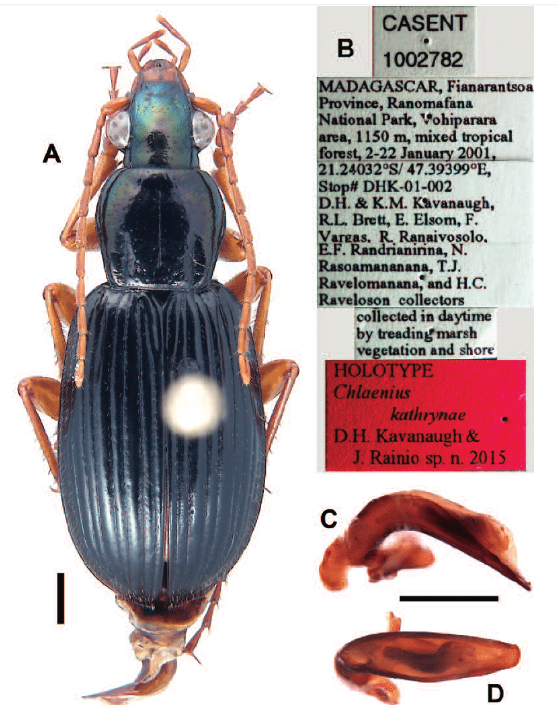
Dr. Dave Kavanaugh’s—Academy’s retired curator of entomology—new species belong to Madagascar’s Ranomafana National Park—an area of lush tropical rainforest stretching nearly 160 square miles across the southwestern portion of the island. During a 5-week expedition, Kavanaugh’s daughter Kathryn assisted him in the field by searching for species of ground beetles in the leaf litter.He later named a beetle, Chlaenius kathrynae, after his daughter.
Chlaenius kathrynae are smaller than members of the other species, have slightly broader and less cordiform pronota (heart -shapeddorsal plate of an insect’s prothorax ). The males have genitalia that are very different in form from those of any of the other species
Kavanaugh collaborates with local Chinese colleagues on the China Natural History Project to document the vast array of ground beetles and other animals and plants still being discovered in this isolated region. “Due to the restricted range and specialization of these insects, they are often some of the first to indicate significant changes to regional climate and biodiversity,” says Kavanaugh, “which is why it’s so important that we learn all about the life around us. You never know what clues even the smallest insects underfoot may hold to the rhythms of life on this planet.”
6. Eurydera oracle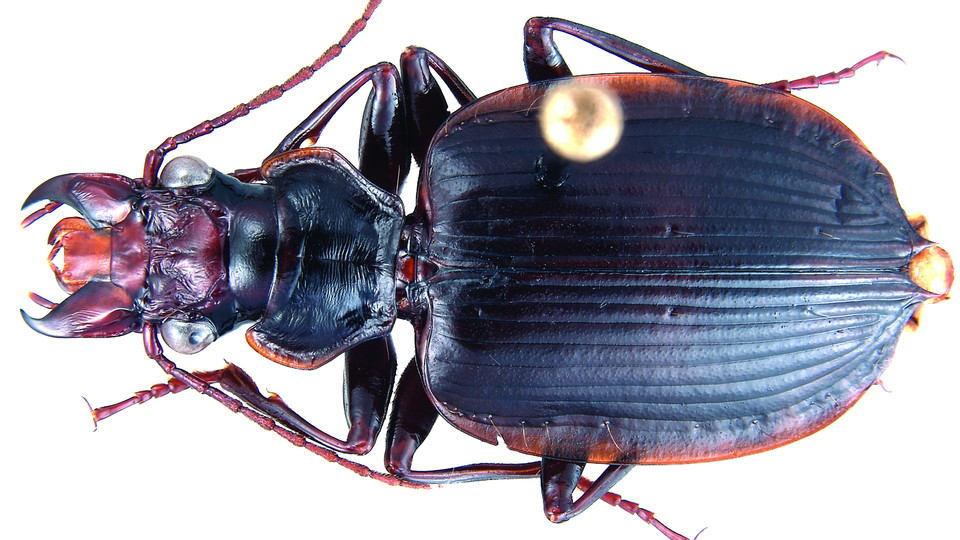
Apart from Chlaenius kathrynae , Dr. Dave Kavanaugh discovered some other new species.
“The first few days of one Madagascar expedition were dry as a bone, making the rainforest insects very hard to find,” says Kavanaugh. “And then the rains came. It poured day and night for the next month. We worked through the storms with jungle rot on our feet from the constant damp.”
The rain led to the successful collection of many new beetle species, including Eurydera oracle, named in honor of generous expedition support provided by Oracle.These flat-backed, fungi- and log-dwelling beetles have size above average for genus. Overall, members of E. oracle are most similar to those of E. sulcicollis, but they differ from the latter in having greater sexual dimorphism.
5. Tosanoides obama
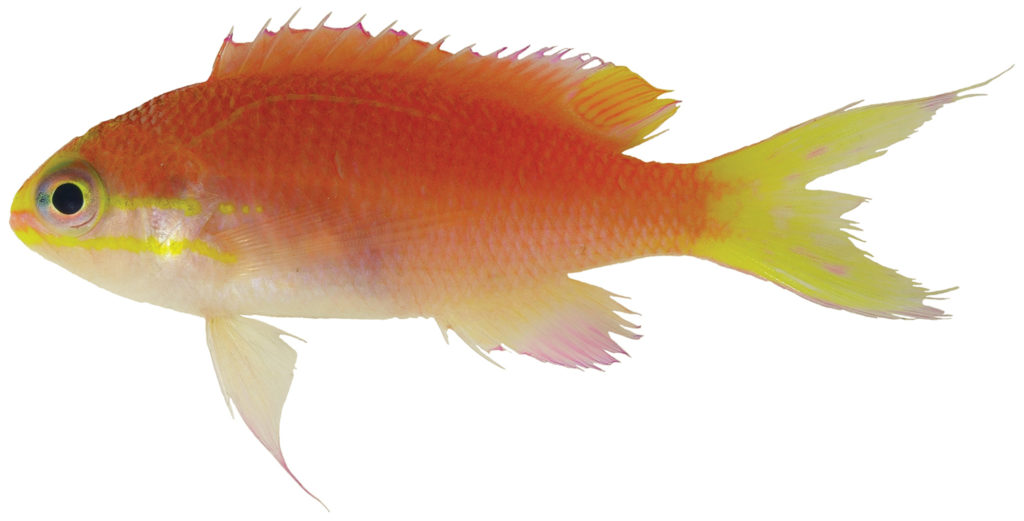
The fish was named by scientists from the Bishop Museum, NOAA, and the Association for Marine Exploration in honor of President Barack Obama. Tosanoides obama was discovered during a June 2016 NOAA expedition to Papahānaumokuākea Marine National Monument in the remote Northwestern Hawaiian Islands.The small pink and yellow fish is a kind of basslet, a group that includes many colorful reef fishes popular in the marine aquarium fish trade.
“We decided to name this fish after President Obama to recognize his efforts to protect and preserve the natural environment, including the expansion of Papahānaumokuākea,” said Richard Pyle, Bishop Museum scientist and lead author of the study.” The spot on the males is reminiscent of President Obama’s campaign logo,” said Pyle. “It seemed especially appropriate for a fish named in honor of the president.”
NOAA scientist Randall Kosaki, chief scientist of the research cruise, and co-author on the paper said that the new fish was special because it was the only coral-reef fish “endemic to the Monument (meaning that the species is found nowhere else on Earth) .”
4. Grammatonotus brianne
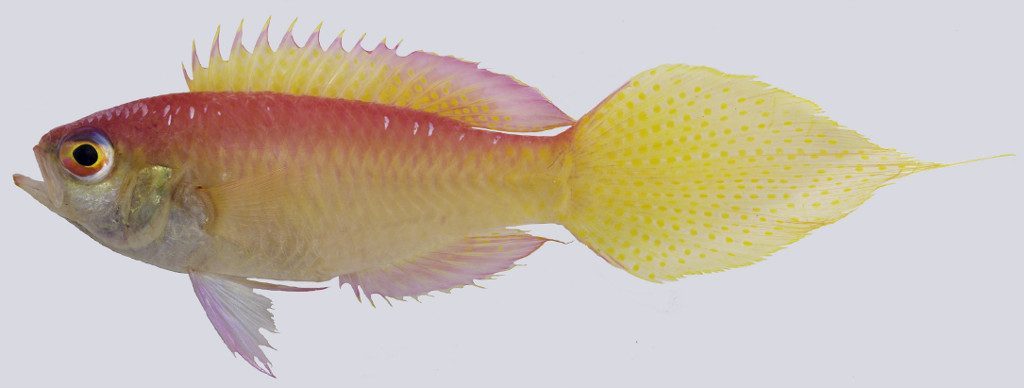
This pink and yellow fish is the deepest new fish discovery ever made by human hands.The new groppo is one of several new species discoveries made during an Academy expedition to the Philippines — part of an ongoing exploration of the Coral Triangle’s biological treasures from the shallows to deep mesophotic “twilight zone” reefs 200 to 500 feet beneath the ocean surface.
Academy scientists are currently diving to twilight zone reefs around the world. In these narrow bands of deep reefs, animals live in partial darkness, well beyond recreational diving limits yet above the deep trenches patrolled by submarines and ROVs.
Deep-diving Academy ichthyologist Dr. Luiz Rocha and Bishop Museum research associate Brian Greene spotted the neon groppo ( later named G. brianne for Greene’s wife) during a murky, cold dive in the Philippine Verde Island Passage, a region known as the “center of the center” of Earth’s marine biodiversity.
“This groppo is the most beautiful fish I’ve ever seen,” says Rocha, a co-leader of the Academy’s team that explore, explain, and sustain coral reefs around the world. “But beyond its looks, it’s a reminder that we know very little about the mysterious half-lit reefs we call the twilight zone. We need to understand the life inside these largely-unexplored deeper reefs because they may help us understand how the oceans respond to great change.”
G. brianne joins 24 new species of fishes—from camouflaging gobies to lanternsharks of the Indian Ocean—described by Academy scientists in 2016 alone.
3. Microhyla laterite

The frog, Microhyla laterite, which is the size of a thumbnail, was discovered by a team of researchers from India and the National University of Singapore (NUS) in the laterite rock formations of India’s coastal plains. Since these coastal plains are usually devoid of trees and other vegetation, they are also classified as wastelands.
The discovery by the research team, led by Mr Seshadri K S, a PhD student from the Department of Biological Sciences at the NUS Faculty of Science, was published in the journal PLOS One on 9 March 2016. Mr Seshadri, who is the lead author of the journal paper, said, “By naming the frog after its habitat, we hope to draw attention to the endangered rock formations that are of ecological importance. M. laterite can potentially be used as a mascot to change peoples’ perception about laterite areas.”
The frog, which measures around 1.6 centimetres, is pale brown with prominent black markings on its dorsum, hands, feet and flanks. It has a call that can be easily mistaken for that of a cricket.
“One could easily confuse this frog with other species like Microhyla ornata which is thought to occur all over India. However, it was evident from analyzing the genes that M. laterite is a distinct species, and is closely related to M. sholigari, which is found only in the Western Ghats,” said Mrs Priti Hebbar, one of the authors of the paper. “All three species are small and similar in appearance and only a critical examination would reveal the differences,” she added.
2. Cordylus namakuiyus

This particular lizard in the sloping lowlands of southern Angola was discovered by Dr. Edward Stanley, Academy herpetology research associate.
Stanley formally described this new species of armored lizard with the aid of CT scans, which revealed that the tiny, bony spikes of Cordylus namakuiyus are actually embedded in the lizard’s skin rather than attached to the skeleton itself.
The species discovery—the result of a joint expedition between the Academy and partner institutions in Angola—represents a strong collaborative step towards exploring the region’s extreme natural landscape. “Not much is known about Angolan species of armored lizards,” says Stanley, “particularly in remote or inaccessible parts of the country, so we are excited to be exploring this biologically rich area.”
1. Eriovixia Gryffindori

Indian scientists have discovered a new species of spider that looks “uncannily” like the sorting hat in Harry Potter and have named it after its owner Godric Gryffindor. The enthusiastic fans of Harry Potter came across this seven millimetre spider, Eriovixia Gryffindori,in October last year during a survey of the lush Western Ghats mountain range in south-west India.
“My colleagues and I are geeks and we all thought, ‘Hey this curious little spider looks exactly like the sorting hat.’ It was uncannily similar,” said scientist Javed Ahmed
“So we made a pact that if this turns out to be a new species we will name it after the sorting hat,” he added
By June, Mumbai-based Ahmed and his fellow scientists were “100 percent” sure it was a new species so they went ahead and named the spider Eriovixia gryffindori. A review by experts confirmed that the spider, which mimics the shape of leaves to avoid predators, was indeed a newly discovered species.
The discovery was published in December’s Indian Journal of Arachnology and sparked a wave of excitement on social media, with Harry Potter creator J.K. Rowling taking to Twitter to express her delight. “I’m truly honoured! Congratulations on discovering another #FantasticBeast!,” Rowling tweeted Ahmed